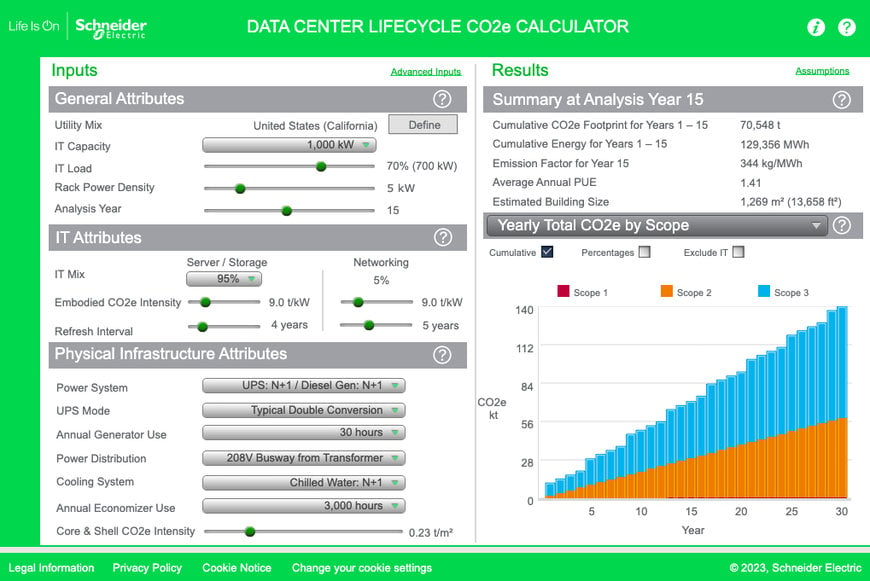www.magazine-industry-usa.com
14
'23
Written on Modified on
SCHNEIDER ELECTRIC UNVEILS CARBON CALCULATOR TO ASSESS FULL ENVIRONMENTAL FOOTPRINT OF DATA CENTRES
The Lifecycle CO2e TradeOff Tool helps to estimate the total carbon footprint for all emissions throughout the value chain, Including indirect emissions.

Schneider Electric™ unveiled a new framework to help companies understand the full environmental impact of enterprise data centres. The framework, detailed in a whitepaper available for download here, includes a free Lifecycle CO2e TradeOff tool, the first of its kind for accurately estimating the total carbon footprint of data centres – including Scope 1, 2 and 3 emissions.
By quantifying Scope 3 emissions from their value chain, organisations can measure their total carbon footprint, including outsourced IT services from cloud and colocation service providers. This Schneider Electric whitepaper takes a data-driven approach to help data centre operators identify and categorise emissions from operations and the supply chain, then prioritise efforts to make impactful carbon reductions.
As the US and EU are proposing rules to mandate, enhance, and standardise climate-related disclosures, accounting for and reporting on Scope 3 emissions will become a future requirement. Establishing and implementing a GHG framework that incorporates carbon counting and target setting while systematically reviewing company data and emission sources, is the foundation for creating an achievable reduction plan. Electricity generation, GHG emissions, and water consumption determine the carbon footprint and water footprint of data centres, including that of its suppliers.
Highlights of the whitepaper include:
- A “Data Center Lifecycle CO2e Calculator” to quantify the details driving Scope 3 in an enterprise data centre like embodied and sub-system embodied carbon.
- An approach to managing a hypothetical 1-megawatt data centre with a focus on Scope 3 emissions and proposed actions for improvements like purchasing efficient and low-carbon products.
- Advice on standardised metrics and what to measure like fuel and energy-related activities, upstream transportation and distribution.

